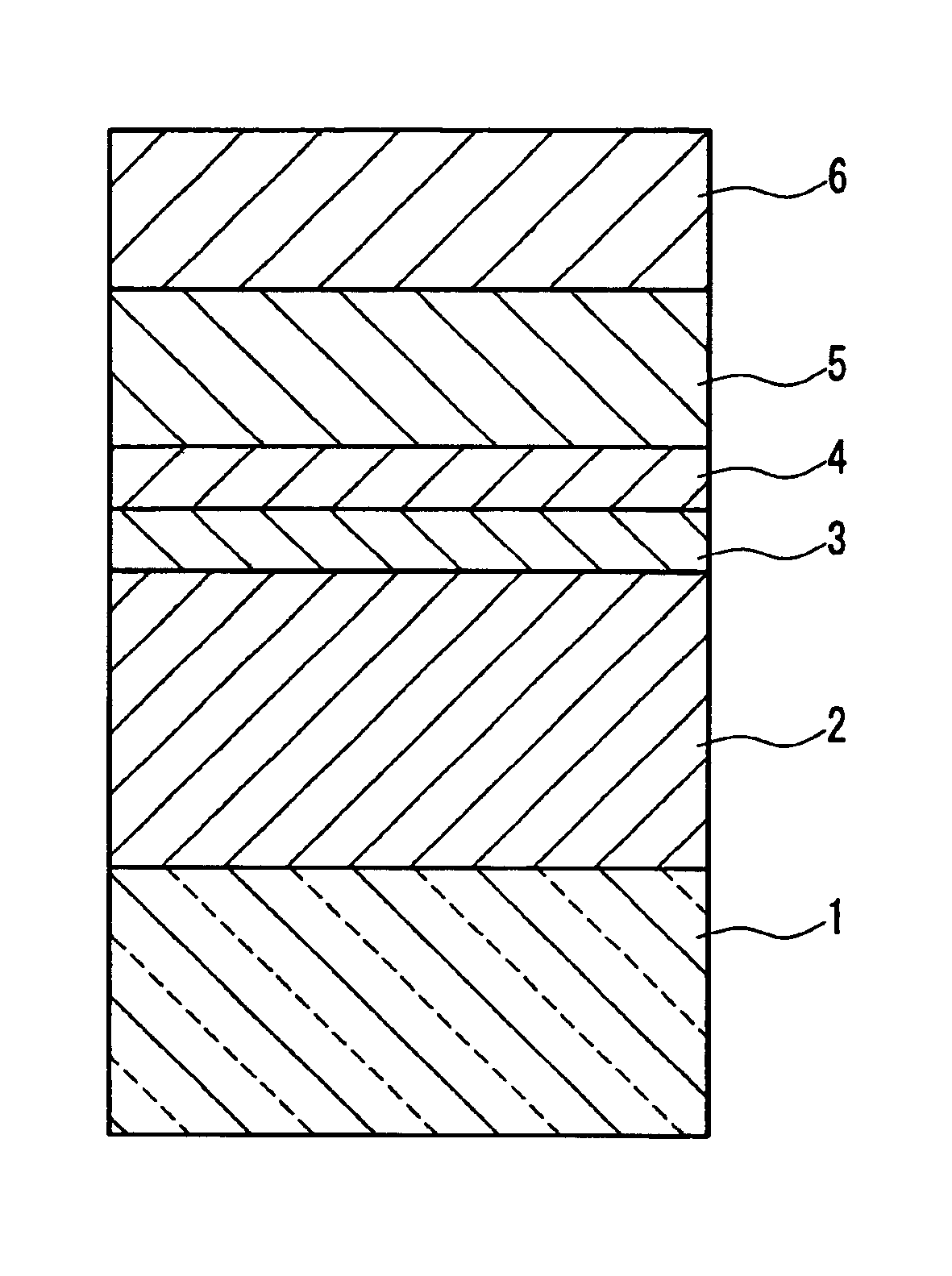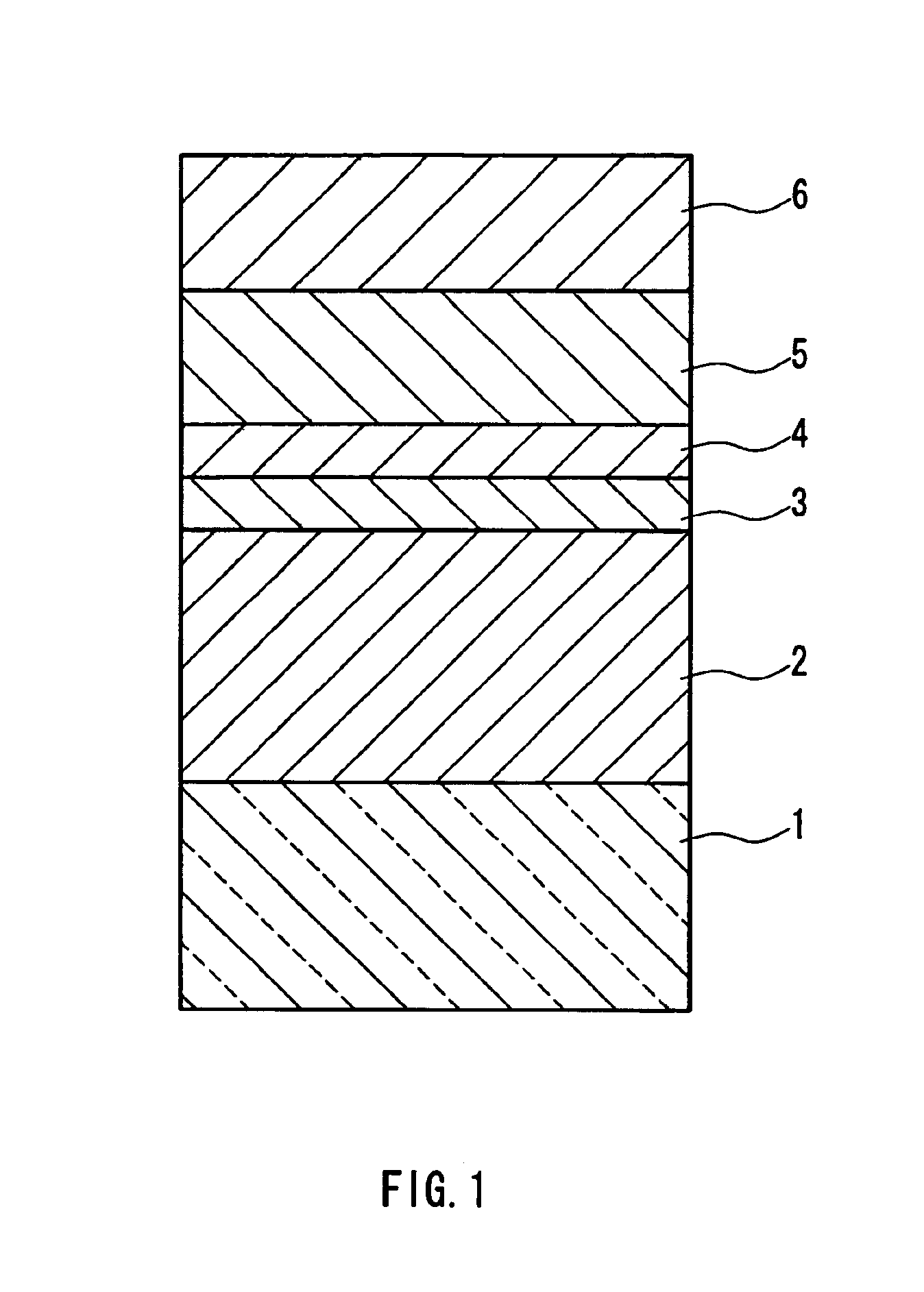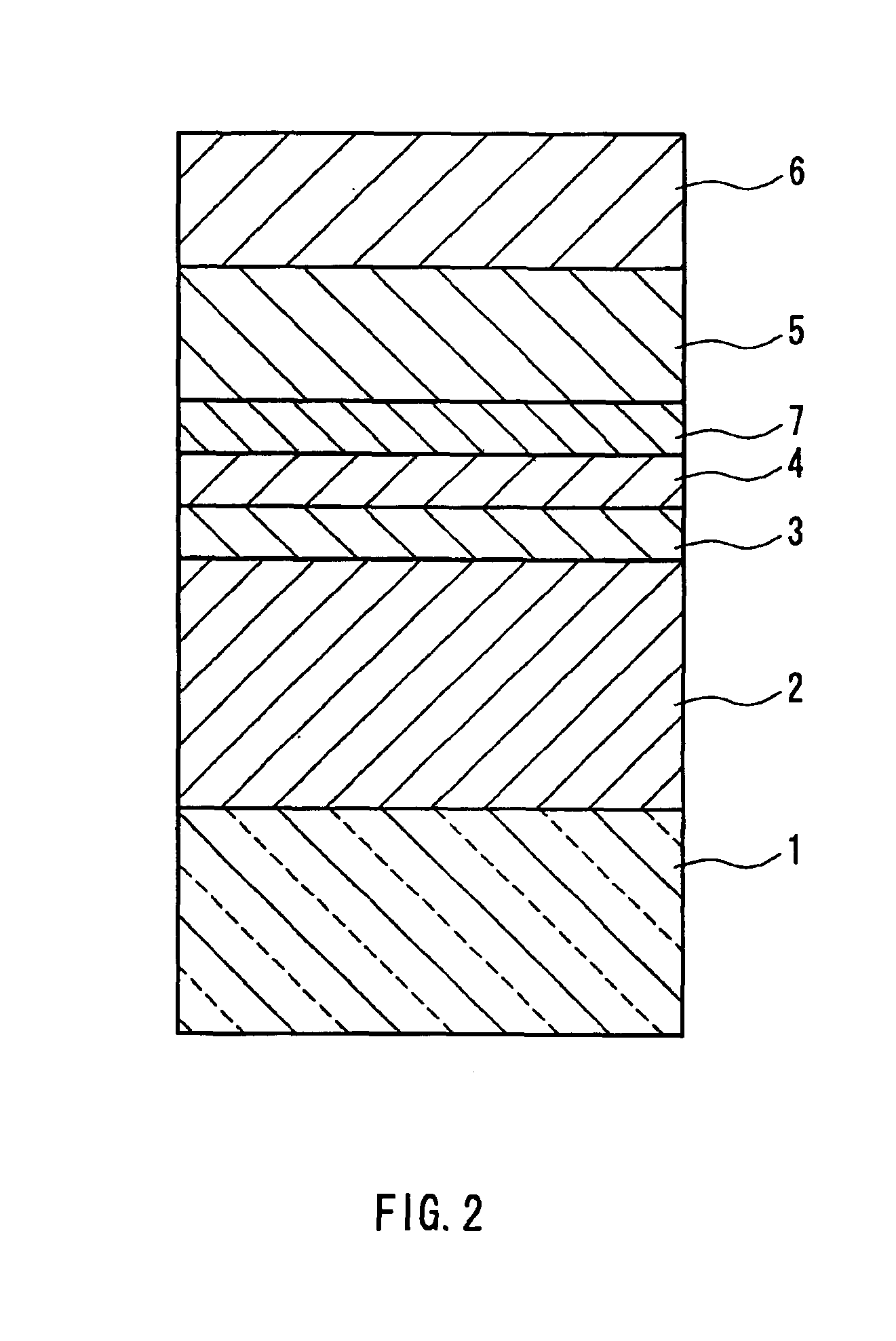Optical information recording medium and its manufacturing method
a technology of optical information and recording medium, which is applied in the field of optical information recording medium, can solve the problems of heat-caused deformation, tilt change, and difficulty in using such methods
- Summary
- Abstract
- Description
- Claims
- Application Information
AI Technical Summary
Benefits of technology
Problems solved by technology
Method used
Image
Examples
working examples
[0042]The following is a description of optical information recording media of the present invention using specific examples. The atomic concentrations in each of the Working Examples and Comparative Examples were measured using Rutherford backscattering spectrometry.
working examples 7 to 14
(2) Working Examples 7 to 14
[0054]The optical disks used in the Working Examples 7 to 14 were given the same structure as that shown in FIG. 1. Furthermore, the substrate 1, the interface layer 3, the recording layer 4, the second protective layer 5, and the reflective layer 6 were manufactured in the same way as the optical disks of the Working Examples 1 to 6.
[0055]The first protective layers 2 included atoms of Zn, S, and Si, and were formed with a material that did not include atoms of O (the atomic composition ratio of O to Si was 0), and were respectively made so that, when the materials of the first protective layer 2 were expressed as (100-a) mol % ZnS-a mol % Si, a became 0 (Working Example 7), 3 (Working Example 8), 5 (Working Example 9), 10 (Working Example 10), 20 (Working Example 11), 30 (Working Example 12), 40 (Working Example 13), and 50 (Working Example 14), that is, the layers were made so that the amount of Si contained would become equivalent to these values. Fur...
PUM
| Property | Measurement | Unit |
|---|---|---|
| refractive indices | aaaaa | aaaaa |
| mol % | aaaaa | aaaaa |
| mol % | aaaaa | aaaaa |
Abstract
Description
Claims
Application Information
 Login to View More
Login to View More - R&D
- Intellectual Property
- Life Sciences
- Materials
- Tech Scout
- Unparalleled Data Quality
- Higher Quality Content
- 60% Fewer Hallucinations
Browse by: Latest US Patents, China's latest patents, Technical Efficacy Thesaurus, Application Domain, Technology Topic, Popular Technical Reports.
© 2025 PatSnap. All rights reserved.Legal|Privacy policy|Modern Slavery Act Transparency Statement|Sitemap|About US| Contact US: help@patsnap.com



